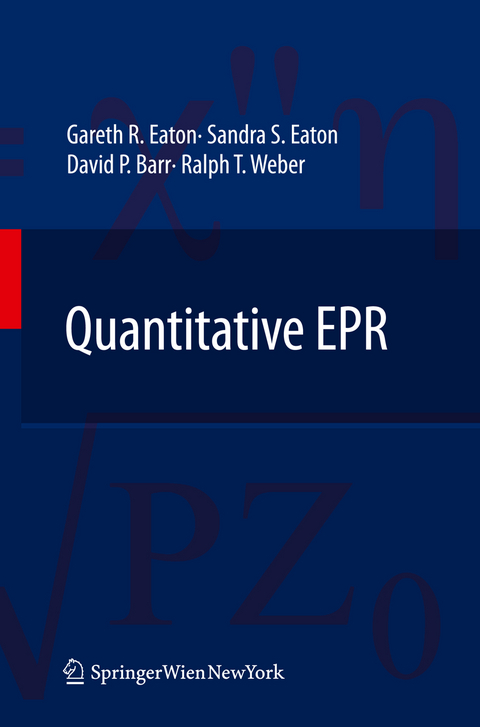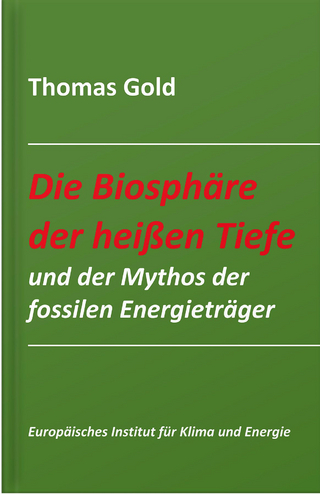
Quantitative EPR
Springer Wien (Verlag)
978-3-7091-1681-4 (ISBN)
Prof. Gareth R. Eaton is John Evans Professor in the Department of Chemistry and Biochemistry at the University of Denver. His research interests include EPR instrumentation, distance measurements in proteins, EPR of metal ions in biological systems, and electron spin relaxation times.
Prof. Sandra S. Eaton is John Evans Professor in the Department of Chemistry and Biochemistry at the University of Denver. Her research interests include distance measurements in proteins, EPR of metal ions in biological systems, electron spin relaxation times, and EPR instrumentation. The Eatons co-organize an annual EPR Symposium in Denver.
Introduction.- Principles of Quantitative EPR; Why should examples of applications be quantitative?; Examples of applications.- Introduction to Quantitative EPR; General expression for CW EPR signal intensity; The EPR transition; Derivative spectra; The CW EPR line width; Second derivative operation; What transitions can we observe; Features of transition metal EPR; Parallel and perpendicular transitions.- Getting started- some practical matters; Operating the spectrometer-cautionary notes; Sample preparation; Don´t forget the cooling water!; Detector current; Automatic frequency control and microwave phase; Searching for a signal; Gain; Effect of scan rates and time constants on S/N and signal fidelity; bandwidth considerations; scan rate and filter time constant; selecting a non-distorting filter and scan rate; A note about comparing noise in CW and pulsed EPR; Background signals; Integration; Microwave power; Modulation amplitude; Modulation amplitude calibration; How to select modulation frequency; Modulation sidebands;Illustration of the effect of modulation amplitude, Modulation frequency, Microwave power on the spectra of free radicals; Phase; Automatic frequency control and microwave phase;Sample considerations; Passage effects; Software; Summary guidance for the operator; Scaling results for quantitative comparisons; Signal averaging; Number of data points, Cleanliness; Changing samples; NMR gaussmeter interference.- What matters, and what can you control? Crucial parameters and how they affect EPR signal intensity;What accuracy can one aspire to?- A deeper look at B1 and modulation field distribution in a resonator; Inhomogenity of B1 and modulation amplitude; Flat cells; Double-cavity simultaneous reference and unknown.-Resonator Q; Conversion efficiancy, C;Contributions to Q; Measurement of Resonator Q.- Filling factor. Temperature; Intensity vs. temperature; Practical example; Glass-forming solvents; Practical aspects of controlling and measuringsample temperature; Operation above room temperature.-Magnetic field and Microwave frequency;G-values; Microwave frequency; Magnetic field; Magnetic field homogenity; Coupling constants vs. hyperfine splittings.-Standard samples; Comparison with a standard sample; Standard samples for Q-band; Achievable accuracy and precision- g value and hyperfine splitting.- How good can it get?- Absolute EPR signal intensities; The spin magnetization M for an arbitrary spin S; Signal voltage; Calculation of noise; Calculation of S/N; Summary of impact of parameters on S/N; How to improve the spectrometer-the Friis equation.- Less common measurements with EPR spectrometers; Multiple resonance methods; Saturation transfer spectroscopy; Electrical conductivity; Static magnetization.
| Erscheint lt. Verlag | 23.11.2014 |
|---|---|
| Zusatzinfo | XII, 185 p. |
| Verlagsort | Vienna |
| Sprache | englisch |
| Maße | 155 x 235 mm |
| Gewicht | 314 g |
| Themenwelt | Naturwissenschaften ► Biologie ► Biochemie |
| Naturwissenschaften ► Chemie ► Analytische Chemie | |
| Naturwissenschaften ► Chemie ► Physikalische Chemie | |
| Naturwissenschaften ► Physik / Astronomie ► Angewandte Physik | |
| Naturwissenschaften ► Physik / Astronomie ► Atom- / Kern- / Molekularphysik | |
| Technik ► Maschinenbau | |
| Schlagworte | Calibration • Distribution • EPR • hyperfine splitting • Quantitative EPR • Spectra • spectroscopy • Spin • Temperature |
| ISBN-10 | 3-7091-1681-3 / 3709116813 |
| ISBN-13 | 978-3-7091-1681-4 / 9783709116814 |
| Zustand | Neuware |
| Informationen gemäß Produktsicherheitsverordnung (GPSR) | |
| Haben Sie eine Frage zum Produkt? |
aus dem Bereich


